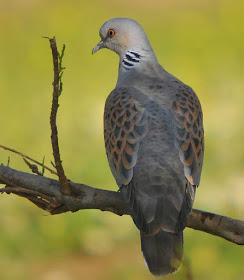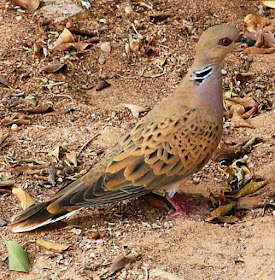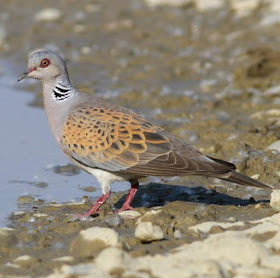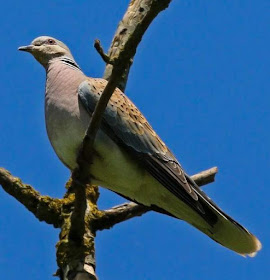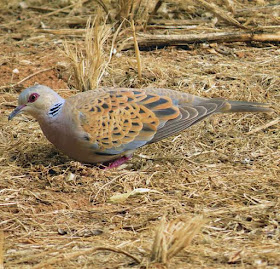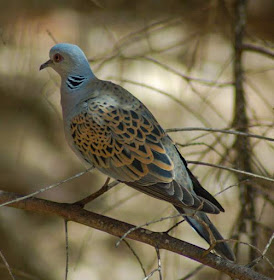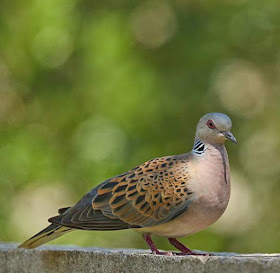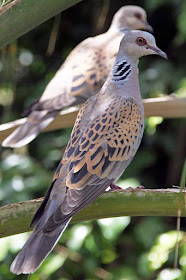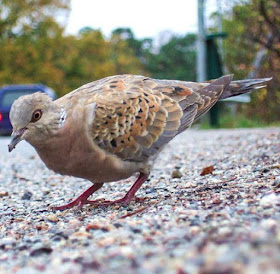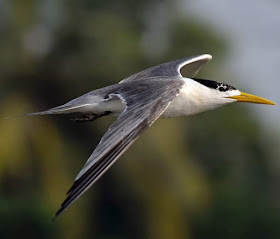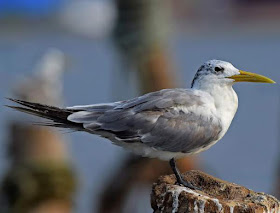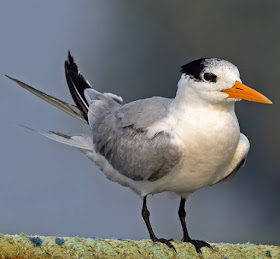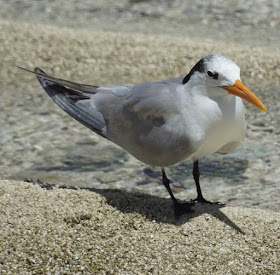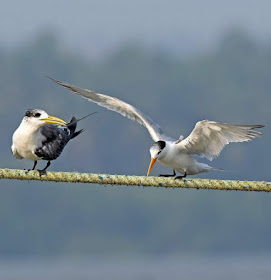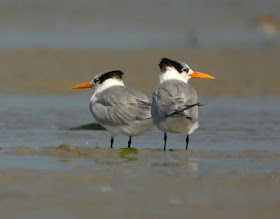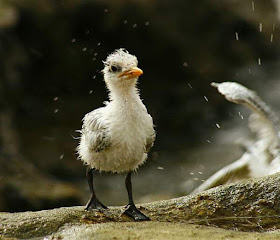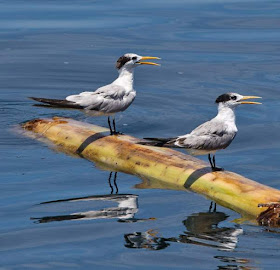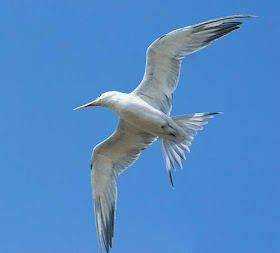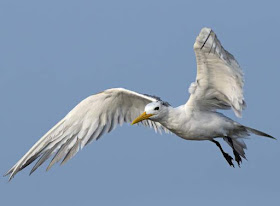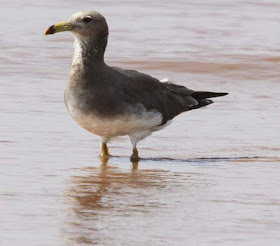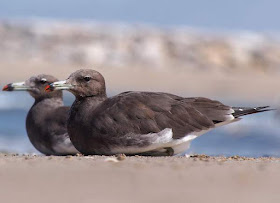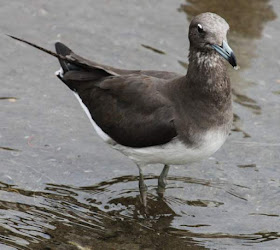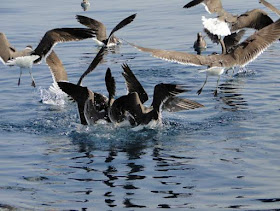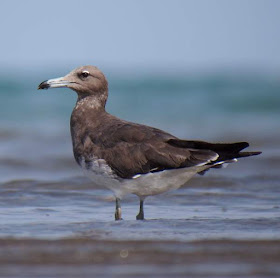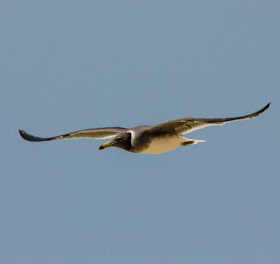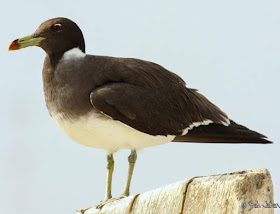Indian birds ›
Lesser crested tern photos ›
European turtle dove - Streptopelia turtur
The European turtle dove (
Streptopelia turtur) belongs to the family of doves and pigeons, Columbidae.
These dove species are distributed in central and southern European countries, Central Asia, West Asia, the Middle East, North Africa and the Sahel region of Africa. The population size of these European turtle dove species has declined sharply and it is listed as "Vulnerable" by IUCN. There are four recognized subspecies of these doves.
European turtle dove - Overview
-
Scientific name: Streptopelia turtur
-
Species author: (Linnaeus, 1758)
-
Synonyms/Protonym: Columba Turtur Linnaeus, 1758, Turtur communis
-
Family: Columbidae › Columbiformes › Aves › Chordata › Animalia
-
Vernacular names: English: European turtle dove, Chinese: 欧斑鸠, French: Tourterelle des bois, German: Turteltaube, Spanish: Tórtola europea, Russian: Обыкновенная горлица, Japanese: コキジバト, Malay: Burung Merpati
-
Other names: Common Turtle-dove, Isabelline Turtle-dove, Eurasian Turtle Dove
-
Distribution: central and southern Europe, Central Asia, the Middle East, North Africa, Sahel zone of Africa
-
Diet and feeding habits: seeds, fruits, berries, cereals, invertebrates
-
IUCN status listing: Vulnerable (VU)
The European turtle dove (
Streptopelia turtur) is closely related to the dusky turtle dove (
Streptopelia lugens), Adamawa turtle dove (
Streptopelia hypopyrrha) and Oriental turtle dove (
Streptopelia orientalis).
The four recognized subspecies of European turtle dove are:
Streptopelia turtur turtur (Linnaeus, 1758),
Streptopelia turtur rufescens (C. L. Brehm, 1845),
Streptopelia turtur hoggara (Geyr von Schweppenburg, 1916) and
Streptopelia turtur arenicola (E. J. O. Hartert, 1894).
Appearance, physical description and identification
The European turtle dove (Streptopelia turtur) is a small dove measuring 25 to 30 cm in length and weighing 100 to 170 grams. The wingspan is 45 to 55 cm.
The plumage of the upperparts of the European turtle dove is brownish gray. There is black and white striped patch on the sides of the neck. The tail is wedge shaped and has dark center and white borders and tips. The head, neck, flanks, and rump are bluish gray.
The wings are cinnamon colored and mottled with black color. The throat region is whitish and the sides of the face are pinkish gray. The lower throat and breast are mauve-pink. The bill is gray and the feet are pink. The eye rim is red and the irises are light yellow. Their call is a characteristic soft, purring, cooing, “rrrhoo..rrhoo” sound.
 |
| Birds of India - Image of European turtle dove - Streptopelia turtur |
 |
| Indian birds - Picture of European turtle dove - Streptopelia turtur |
 |
| Birds of India - Photo of European turtle dove - Streptopelia turtur |
Origin, geographical range and distribution
The European turtle dove species are distributed in central and southern European countries, Central Asia, West Asia, the Middle East, North Africa and the Sahel region of Africa. Vagrants occur in Pakistan, India and Maldives.
Wintering European turtle dove species are distributed in south Mauritania, Senegal, Gambia, Guinea-Bissau, north Guinea, south Mali, Burkina Faso, south Niger, north Nigeria, north Cameroon, Chad, northern Central African Republic, Sudan, northern South Sudan, central and western Ethiopia and Eritrea.
The European turtle dove nominate subspecies
S. t. turtur is distributed in the central and southern Europe, north Mediterranean coast, Turkey, Syria, Georgia, Azerbaijan, Kazakhstan and Western Russia and west Siberia.
The subspecies
S. t. arenicola is distributed in north Africa, Middle East, Afghanistan, Turkmenistan, Uzbekistan, Tajikistan, Kyrgyzstan and northwest China.The subspecies
S. t. rufescens is distributed in parts of Nile Valley and Kharga and Faiyum Oases in Egypt.
The Important Bird and Biodiversity Areas (IBA) of European turtle dove species in Bulgaria are, Kresna Gorge, Provadiysko-Royaksko plateau and Sakar. The IBA in Czech Republic is Krivoklatsko (Krivoklatsko region).
The Important Bird and Biodiversity Areas (IBA) of these doves in Italy is Selva del Lamone. The IBA in Spain are Mountains of Barcelona and the IBA in Ukraine is Samars'kyj forest.
Ecosystem and habitat
These European turtle dove species are moderately forest dependent. These species occur in altitudes from 0 to 1300 meters.
These European turtle dove species inhabit artificial ecosystems like agricultural lands, hedges, trees on the margin of roads, rural gardens, groves, young plantations and degraded forests.
The natural ecosystems of these doves includes steppe, semi-deserts, boreal forests, temperate forests, borders of forests, shrubby vegetations, scrubby wasteland, temperate shrublands and woody marshes.
Diet and feeding behavior
The diet of these European dove species is mostly seeds. Wild seeds, berries, fruits, cereal and invertebrates are their primary food. They usually forage on the ground.
Reproduction and breeding habits
The breeding season of the European turtle dove starts from the month of May in most of the range. They nest on lowest branches of trees and on shrubs and hedges.
The nest is a small platform of twigs and sticks, lined with plant material like grass stems, roots and leaves. The typical clutch of these dove species contains two white oval eggs.
Migration and movement patterns
The European turtle dove species are strongly migratory birds.
Breeding populations of European turtle dove exist in central and southern Europe, Central Asia, the Middle East and North Africa. After raising the young, in September, these birds move southwards for wintering in Sahel region of Africa.
Wintering birds are observed in south Mauritania, Senegal, Gambia, Guinea-Bissau, north Guinea, south Mali, Burkina Faso, south Niger, north Nigeria, north Cameroon, Chad, northern Central African Republic, Sudan, northern South Sudan, central and western Ethiopia and Eritrea.
These doves move north to their breeding grounds in early summer. Some African populations existing in their southern breeding range may remain resident.
Conservation and survival
The global population size of the European turtle dove (
Streptopelia turtur) is estimated to be around 19,300,000 to 71,400,000 individual birds. The overall population trend of these dove species is considered to be decreasing rapidly. Throughout its range it is reported to be fairly common and numerous. The generation length is 5.3 years. Their distribution size is about 36,000,000 sq.km.
The European turtle dove (
Streptopelia turtur) has approached the thresholds for being Vulnerable, under the range size criterion, under the population trend criterion and under the population size criterion. Loss of foraging and breeding habitats and hunting pressure are the main threats that may endanger the survival of these dove species.
IUCN and CITES status
The IUCN (International Union for Conservation of Nature) has categorized and evaluated the dove species and has listed it as "Vulnerable". CITES (the Convention on International Trade in Endangered Species of Wild Fauna and Flora) status is ‘Not Evaluated’ for the European turtle dove (
Streptopelia turtur).
|
Taxonomy and scientific classification of Streptopelia turtur |
|---|
|
Kingdom: | Animalia |
|
Phylum: | Chordata |
|
Class: | Aves |
|
Order: | Columbiformes |
|
Family: | Columbidae |
|
Subfamily: | - |
|
Genus: | Streptopelia |
|
Species: | S. turtur |
|
Binomial name: | Streptopelia turtur |
|
IUCN status listing: |

Vulnerable
|
1.Image source: https://commons.wikimedia.org/wiki/File:European_turtle_dove.JPG (cropped)
Image author: Revital Salomon | License: CC BY-SA 4.0
2.Image source: https://commons.wikimedia.org/wiki/File:Streptopelia_turtur_0234.JPG (cropped)
Image author: Esculapio | License: CC BY-SA 3.0
3.Image source: https://commons.wikimedia.org/wiki/File:Kebokurk-2.jpg (cropped)
Image author: Dûrzan cîrano | License: CC BY-SA 3.0
Current topic in Birds of India: European turtle dove -
Streptopelia turtur.
